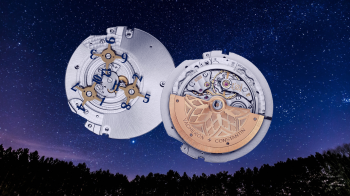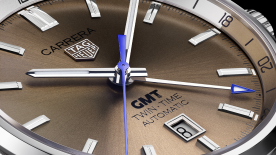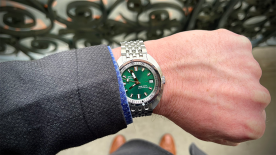Generally speaking, you can classify time-display systems into two broad categories: they are either prosaic or poetic. As timepieces first emerged as functional objects, it stands to reason that their primary method of expression was prosaic — using rotating hands to indicate the time. Subsequently, other creative (or poetic) displays evolved, with the aim of creating visual interest, showcasing the watchmaker’s skill, or communicating some sort of philosophical idea. One system of time display that falls into this second category is the wandering hour, which has been featured in brands ranging from Audemars Piguet to URWERK, with interpretations from the deeply traditional to space-age futuristic.

The wandering hour display is not a modern invention, not by any means. One of the earliest known examples of such a display comes from the 17th century — specifically 1656 — when a wandering hour clock was created for Pope Alexander VII. His insomniac Holiness suffered terribly from sleepless nights and the clock was designed to let him know what the time was without having to go through the hassle of getting up to light a candle. The clock, created by the Campani watchmaker brothers, showed an hour marker, backlit by a lantern, that slowly traversed an arc over the course of its 60-minute span, to be replaced by the next upcoming hour. This was a couple of decades before the first known repeating watch appeared, another innovation that would allow time to be easily told at night.
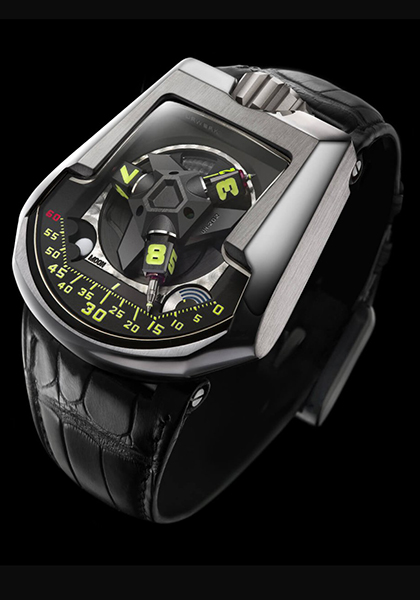
As far as visual effect goes, the main appeal of the wandering hour is the mystery of where the hours magically appear from, since it’s physically impossible to fit that many widely-spaced hour markers behind the dial. The answer lies in a system of three or four hour discs, held by a central frame that carries the hour markers around the dial and also switches the orientation of the hour discs to display the correct hour when needed.
Watches such as the collector-favourite Audemars Piguet Star Wheel expose this mechanism entirely, making it possible for the wearer to observe the complex dance of its components in full. When the thickness of the movement is important, such as in an elegant dress watch, a system that is vertically compact makes the most sense, which is why the most classic executions of the wandering hour use a combination of star-shaped wheels and jumper springs to create this display. Alternatively, a system of Maltese crosses can be used to ensure greater precision in the display and eliminate any fluctuations in torque, but older timepieces generally used the star-wheel system, which required less precision in terms of manufacturing tolerances.
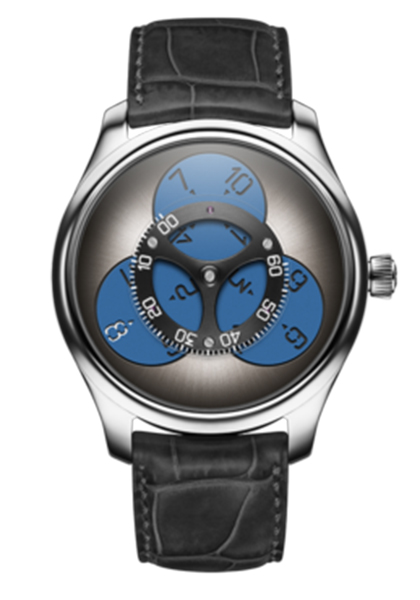
The rise of independent watchmaking around the turn of the millennium, with avant-garde case designs, resulted in a rise of three-dimensional time displays. One of the pioneers in this area was URWERK, whose timepieces featured the wandering hour from the very beginning. Starting with the collection UR-202, the dynamic indication of time with revolving hour cubes brought the wandering hour into the 21st century. The addition of a telescoping hand that extended and retracted from the hour cubes provided the maximum amount of precision in indicating the minutes. With this feature, URWERK gave the wandering hour, with its traditionally whimsical associations, a modern technical edge.

Of course, timepieces that maintain mysterious nature of the wandering hour still exist. The H. Moser & Cie. Endeavour Flying Hours appears to use the familiar configuration of hour discs and mobile frame, but the discs actually remain stationary at all times. Instead, each hour numeral turns white to indicate the time, while the minute scale rotates accordingly to match the position of the hour. Vacheron Constantin use the wandering hour regularly (if infrequently), most recently in their 2020 Watches And Wonders novelty La Musique de Temps Les Cabinotiers “Singing Birds” — taking advantage of the large amount of dial space freed up by the wandering hour to highlight their expertise in the decorative arts.
